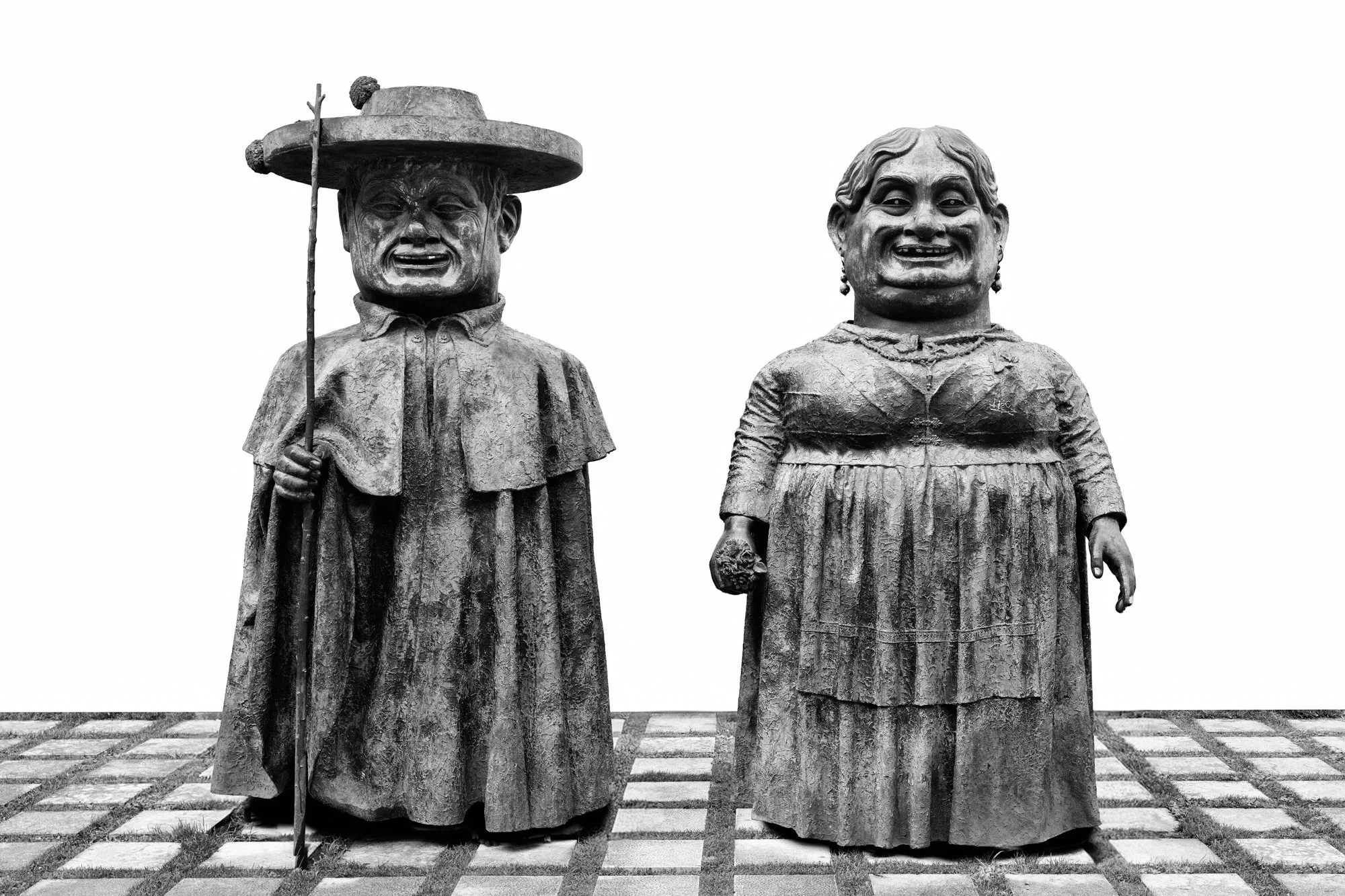The Gigantillos of Burgos.
Close to Plaza de España you’ll meet them mid-step: a bronze couple frozen in a festival beat. The man—wide-brimmed hat, long brown cape, staff of office—leans forward as if to lead. The woman—headscarf, earrings, skirt swirling—answers with a half-bow that might become a spin. This is Los Gigantillos, the city’s beloved “little giants,” cast in bronze by Teodoro Antonio Ruiz and set beside the Church of San Lesmes in 2010.
They don’t just decorate a sidewalk; they guard a story. The Gigantillos are the human-scale cousins of Spain’s towering festival giants. In Burgos they come alive to the sharp call of the dulzaina and the heartbeat of the drum, dancing through Corpus Christi, Curpillos, San Lesmes, and the feast of Saints Peter and Paul. Where they pass, children copy their steps, grandparents clap in time, and the street remembers its own choreography.
The tradition is older than the pavement beneath your feet. Versions of these figures paraded here as early as the sixteenth century; in 1899 the modern pair took shape. A disastrous fire in 1973 forced the city to start again—proof that folklore isn’t fragile when a community chooses to carry it. The bronze couple arrived in our century to mark the centenary of the local savings bank, anchoring the living dance in metal so you can meet them even out of season.
Look closely and you’ll see the city inscribed in details: the mayoral staff in his hand, a civic symbol disguised as stage prop; the cape catching imaginary wind; the tilt of her shoulders that suggests music you can’t quite hear. Take a photo if you like, but better—stand a minute. Imagine the dulzaina cutting the morning air, the drum finding your ribs, and the Gigantillos stepping forward, as they always have, to lead Burgos into its next celebration.


